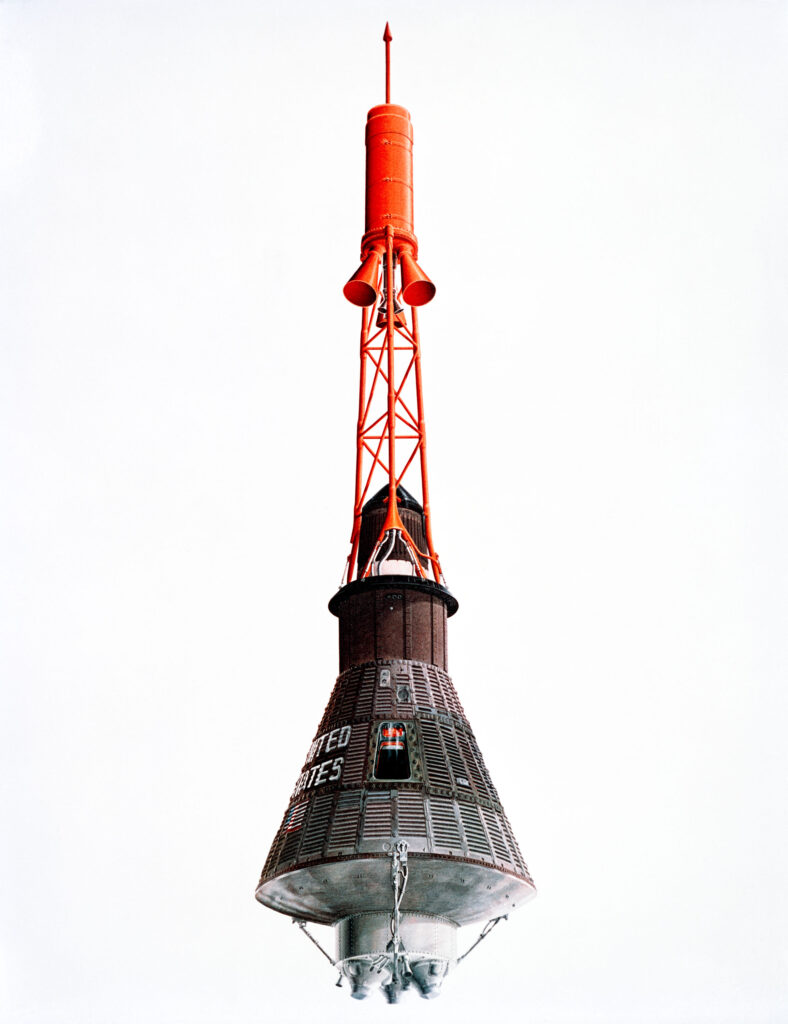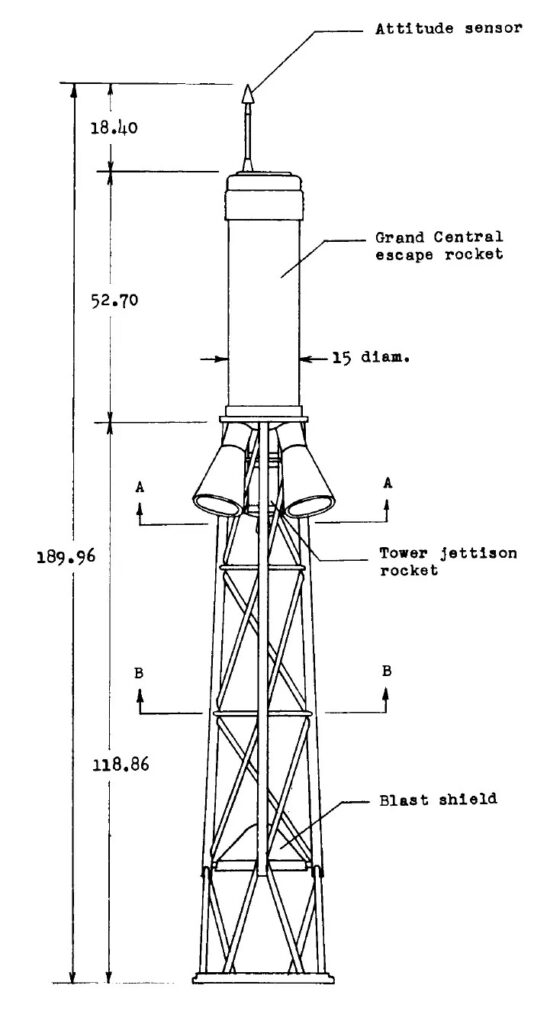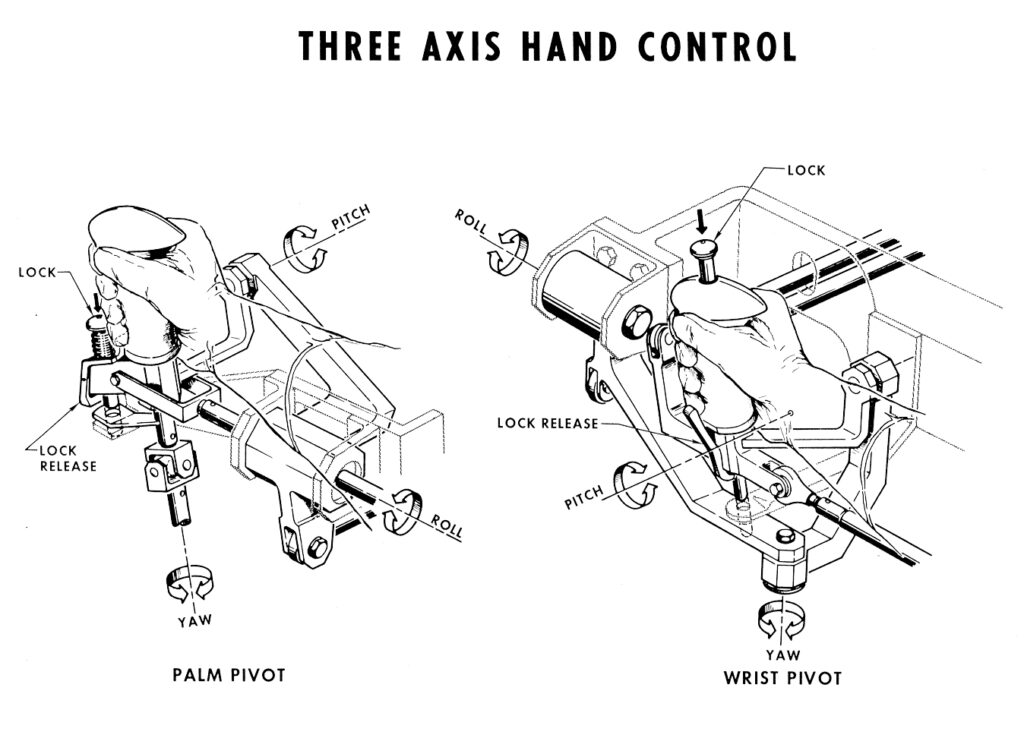The Mercury capsule was developed under the leadership of Maxime Faget of NASA, with collaboration from more than twenty industrial companies. The contract to build the spacecraft was awarded to the company McDonnell Aircraft Corporation.
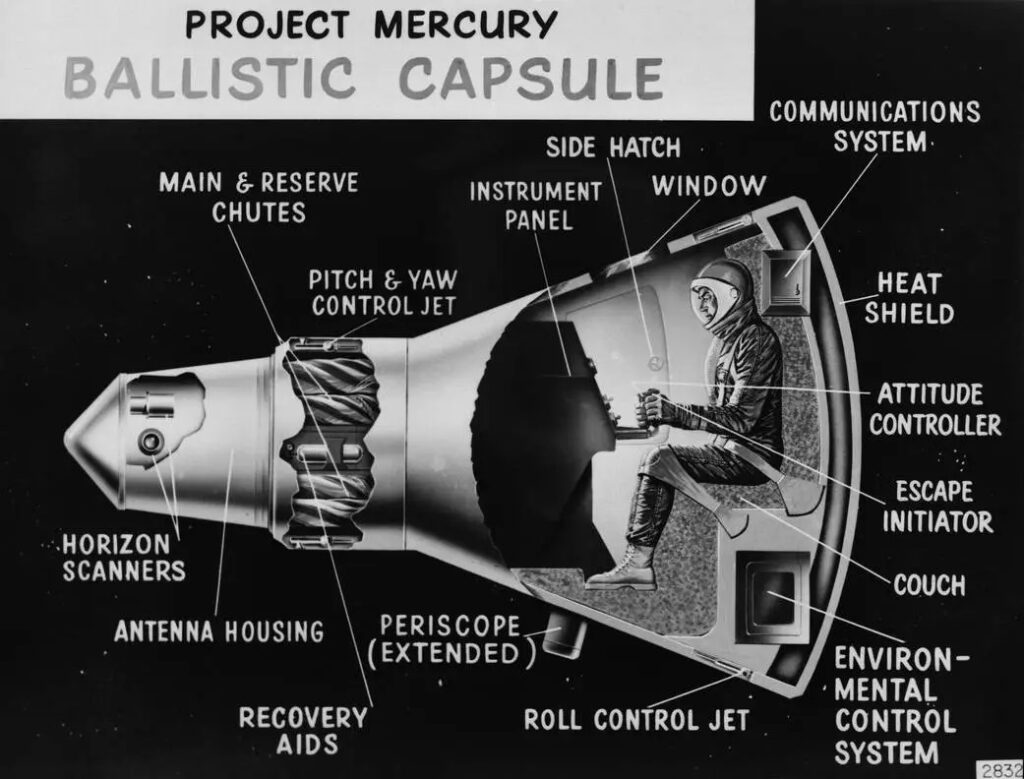
The launch mass of the capsule was 1,935 kg, the height without a rescue rocket was 3.51 m, with a rescue rocket it was 7.9 m, and the largest diameter was 1.89 m. In the event of a false start, the space capsule could be separated from the propulsion rocket by the rescue rocket and brought to safety . However, these rescue rockets never had to be used.
The capsule was cone-shaped and had a neck at the narrow end. It had a convex base that supported a heat shield made of aluminum honeycomb covered with multiple layers of fiberglass. A retropack was attached to it, which consisted of three rockets (retrograd package) that were supposed to slow down the spacecraft during re-entry. Between them were three smaller rockets (Posigrade Package) to separate the spacecraft from the launch vehicle during insertion into orbit. The straps holding the package in place could be cut when it was no longer needed. Next to the heat shield was the pressurized crew compartment. Inside, an astronaut would be strapped into a form-fitting seat, with instruments in front of him and his back to the heat shield. Under the seat was the environmental control system, which provided oxygen and heat, cleaned the air of CO2, steam and odors, and (on orbital flights) collected urine. The recovery compartment at the narrow end of the spacecraft contained three parachutes: a braking parachute to stabilize free fall and two main parachutes, a primary and a reserve parachute. Between the heat shield and the inner wall of the crew compartment was a landing skirt, which was deployed by lowering the heat shield before landing. On top of the recovery room was the antenna section, which contained both antennas for communications and scanners to control the spacecraft’s orientation. There was a flap attached to it that ensured that the spacecraft entered the atmosphere with the heat shield first during re-entry.
The astronaut was able to control the position and trajectory of the capsule using a hand control, but the space capsule was also equipped with a device that enabled the ground crew to control the spacecraft completely remotely from Earth. Since the Mercury capsules only had a very limited internal volume, there was only room for a single astronaut.
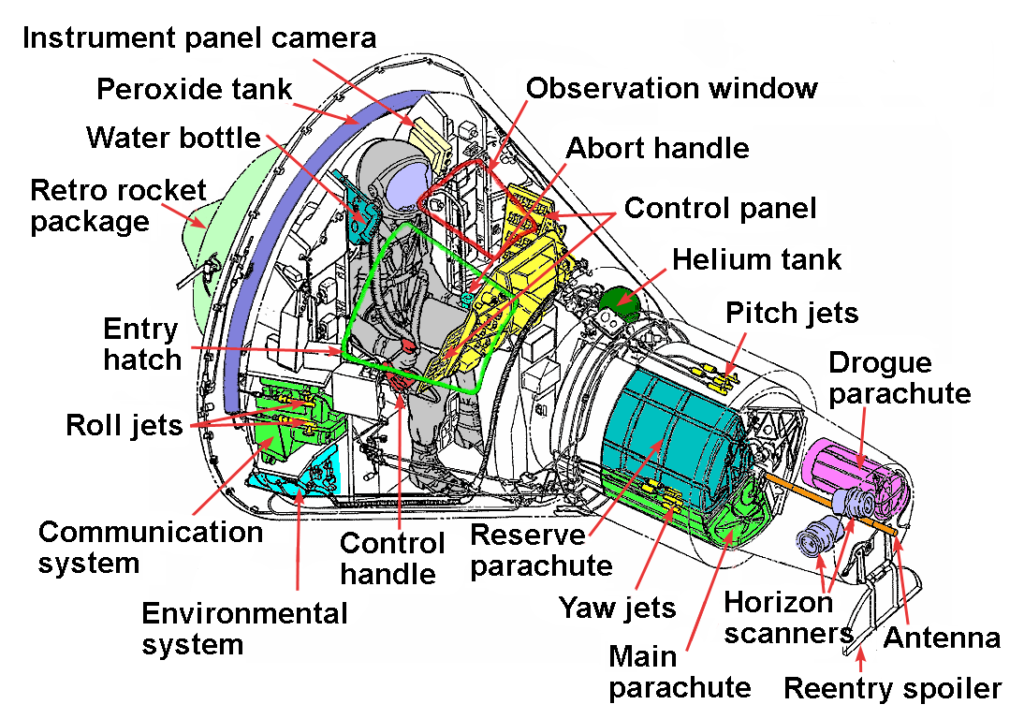
The interior of the capsule had a volume of 1.7 cubic meters. The astronaut was able to operate the capsule via 120 controls (55 switches, 30 fuses and 35 levers). The heat shield played an important role during the re-entry of the space capsule. During reentry, acceleration forces of 4 g applied to the astronaut. After re-entry, the capsule was slowed down with parachutes and splashed into the sea.
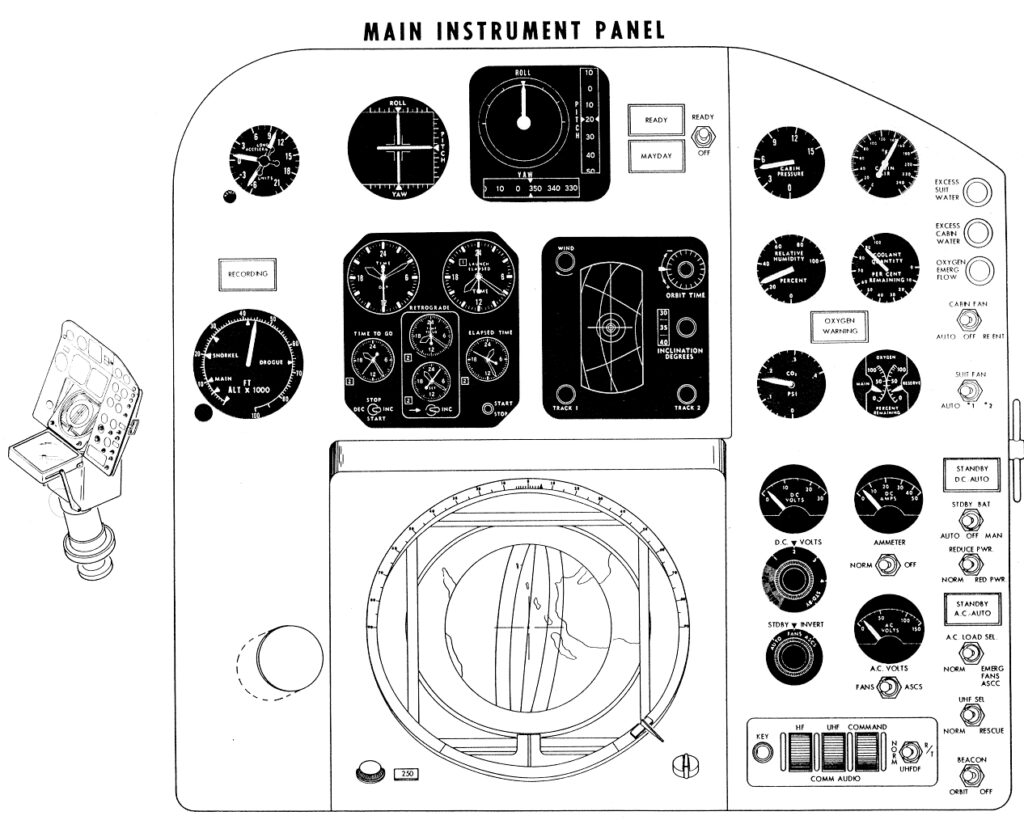
The Mercury capsule did not have an onboard computer, but instead relied on all reentry calculations being performed by computers on the ground, the results of which (retrofire times and firing attitude) were then transmitted by radio to the spacecraft during flight. All computer systems used in the Mercury program were housed exclusively at NASA facilities on Earth.
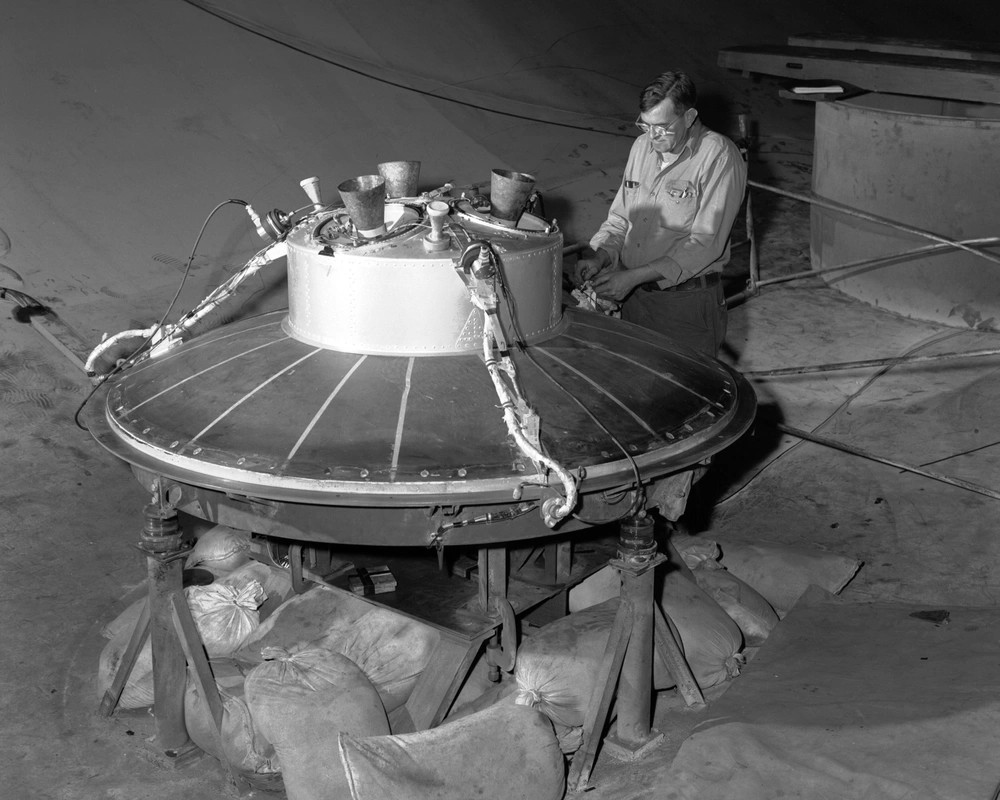
NASA ordered a total of 20 Mercury capsules, and additional non-flyable models (Mercury boilerplate) were built for tests.

